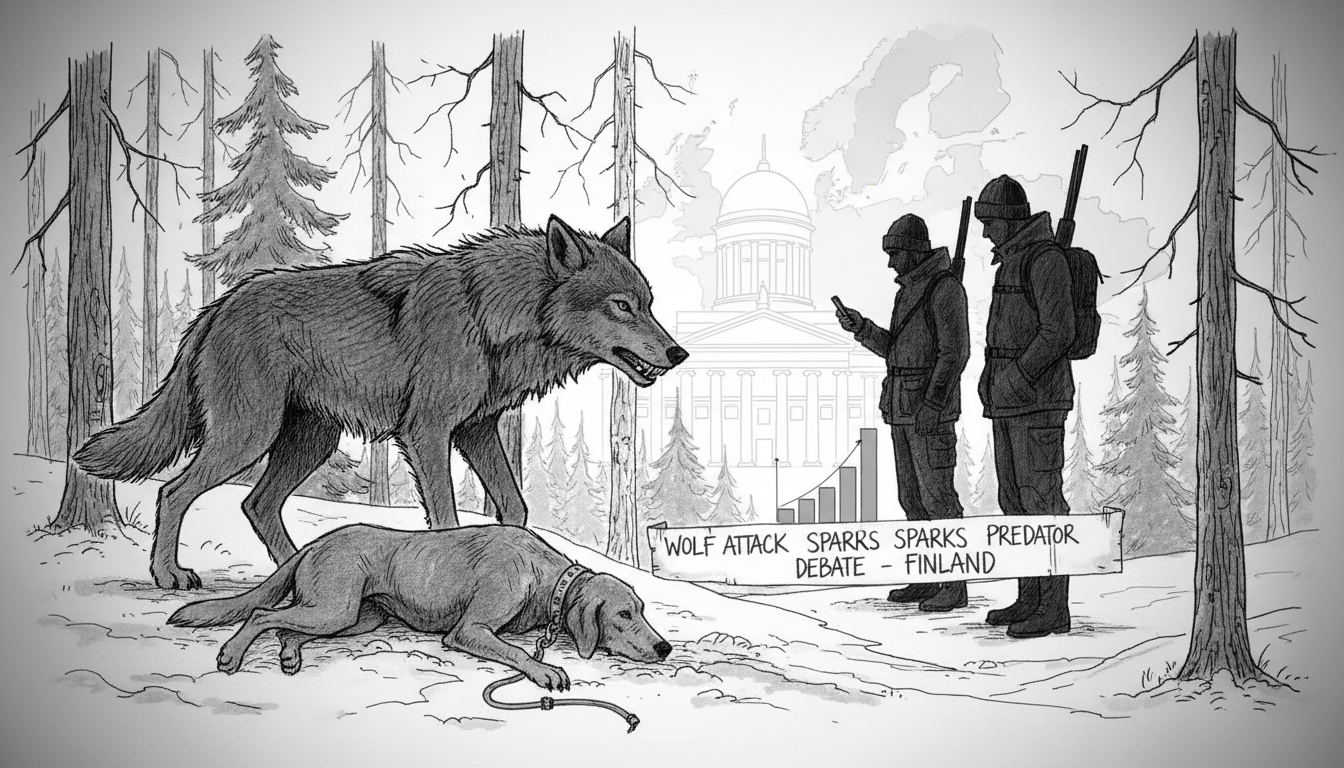A Norwegian elkhound named Otto was killed by a wolf last Thursday in Elimäki, southern Finland, marking the twenty-ninth confirmed wolf attack on hunting dogs this season. The six-year-old dog had been tracking an elk for twenty minutes when the wolf intervened. Owner Mikko Rantala found his dog with fatal neck and leg injuries after hearing the barking stop. Clean wolf tracks led through a frosty field to the attack site located 150 meters from open farmland and half a kilometer from the nearest houses.
The Finnish Hunters' Association immediately responded by renewing demands for population management hunting of wolves. Association director Jaakko Silpola argues Finland's current protection benchmark of 273 wolves remains unreasonable compared to Sweden's 170-animal reference level. Scientific assessments confirm Finland's single wolf population maintains genetic viability through cross-border movement from Russia, with dozens of wolves migrating westward annually.
This incident highlights growing tensions between conservation goals and rural traditions. Hunting communities report increasing reluctance to train valuable dogs amid rising predator encounters. Rantala himself doubts he will replace his elkhound while current conditions persist. His local hunting club faces particular challenges as elk frequently gather along major road corridors where hunters hesitate to send dogs due to traffic risks, while wolves patrol surrounding woodlands.
Finland's wolf management debate intersects with broader European wildlife policy. The Habitats Directive requires maintaining favorable conservation status while allowing population control where specific criteria are met. Finnish authorities must balance EU obligations with domestic concerns about livestock protection and hunting traditions. The Parliament's Agriculture and Forestry Committee continues reviewing proposed amendments to large carnivore management regulations.
Historical context shows wolf conflicts have cycled through Finnish rural life for generations. Current population estimates indicate approximately 250-300 wolves roam Finnish forests, concentrated mainly in eastern and central regions. While attacks on humans remain extremely rare, pet and livestock depredations generate regular headlines and political pressure. The Ministry of Agriculture and Forestry typically issues limited hunting permits each winter based on damage assessments and population monitoring.
International observers should note this case reflects wider Nordic patterns. Sweden and Norway face similar debates about balancing predator conservation with reindeer herding and hunting interests. Finland's solution will likely influence regional approaches to large carnivore management. The government faces difficult decisions between ecological commitments and practical rural realities as both conservationists and hunting organizations intensify their lobbying efforts.

